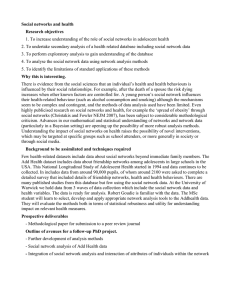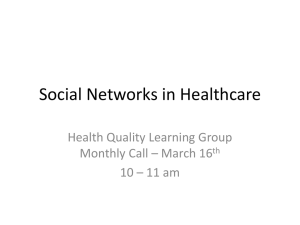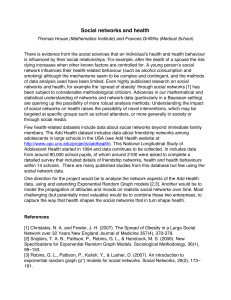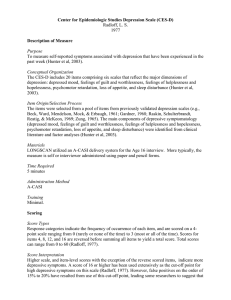Social networks and health
advertisement
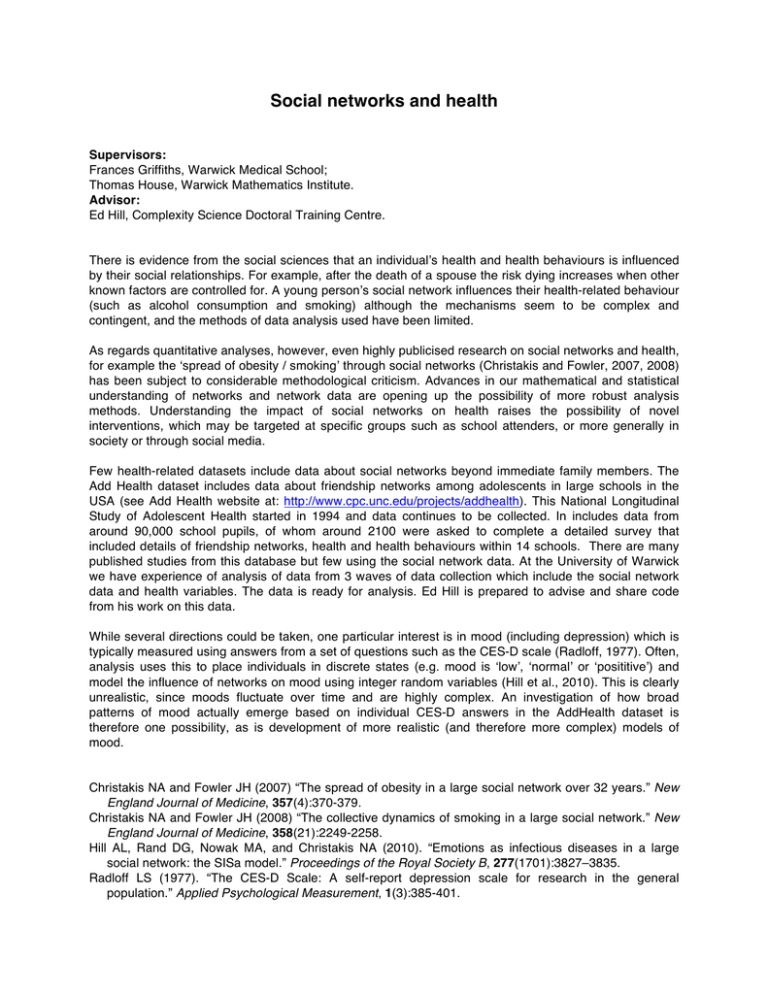
Social networks and health Supervisors: Frances Griffiths, Warwick Medical School; Thomas House, Warwick Mathematics Institute. Advisor: Ed Hill, Complexity Science Doctoral Training Centre. There is evidence from the social sciences that an individual’s health and health behaviours is influenced by their social relationships. For example, after the death of a spouse the risk dying increases when other known factors are controlled for. A young person’s social network influences their health-related behaviour (such as alcohol consumption and smoking) although the mechanisms seem to be complex and contingent, and the methods of data analysis used have been limited. As regards quantitative analyses, however, even highly publicised research on social networks and health, for example the ‘spread of obesity / smoking’ through social networks (Christakis and Fowler, 2007, 2008) has been subject to considerable methodological criticism. Advances in our mathematical and statistical understanding of networks and network data are opening up the possibility of more robust analysis methods. Understanding the impact of social networks on health raises the possibility of novel interventions, which may be targeted at specific groups such as school attenders, or more generally in society or through social media. Few health-related datasets include data about social networks beyond immediate family members. The Add Health dataset includes data about friendship networks among adolescents in large schools in the USA (see Add Health website at: http://www.cpc.unc.edu/projects/addhealth). This National Longitudinal Study of Adolescent Health started in 1994 and data continues to be collected. In includes data from around 90,000 school pupils, of whom around 2100 were asked to complete a detailed survey that included details of friendship networks, health and health behaviours within 14 schools. There are many published studies from this database but few using the social network data. At the University of Warwick we have experience of analysis of data from 3 waves of data collection which include the social network data and health variables. The data is ready for analysis. Ed Hill is prepared to advise and share code from his work on this data. While several directions could be taken, one particular interest is in mood (including depression) which is typically measured using answers from a set of questions such as the CES-D scale (Radloff, 1977). Often, analysis uses this to place individuals in discrete states (e.g. mood is ‘low’, ‘normal’ or ‘posititive’) and model the influence of networks on mood using integer random variables (Hill et al., 2010). This is clearly unrealistic, since moods fluctuate over time and are highly complex. An investigation of how broad patterns of mood actually emerge based on individual CES-D answers in the AddHealth dataset is therefore one possibility, as is development of more realistic (and therefore more complex) models of mood. Christakis NA and Fowler JH (2007) “The spread of obesity in a large social network over 32 years.” New England Journal of Medicine, 357(4):370-379. Christakis NA and Fowler JH (2008) “The collective dynamics of smoking in a large social network.” New England Journal of Medicine, 358(21):2249-2258. Hill AL, Rand DG, Nowak MA, and Christakis NA (2010). “Emotions as infectious diseases in a large social network: the SISa model.” Proceedings of the Royal Society B, 277(1701):3827–3835. Radloff LS (1977). “The CES-D Scale: A self-report depression scale for research in the general population.” Applied Psychological Measurement, 1(3):385-401.
